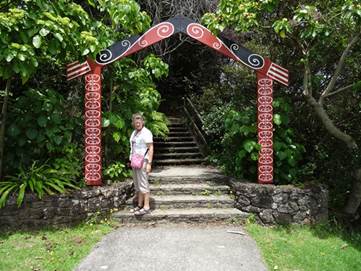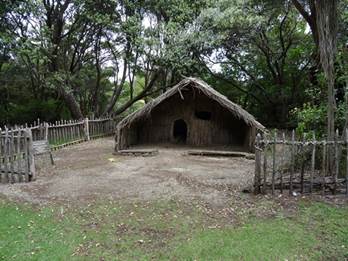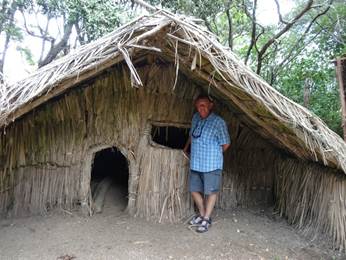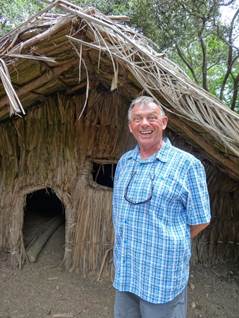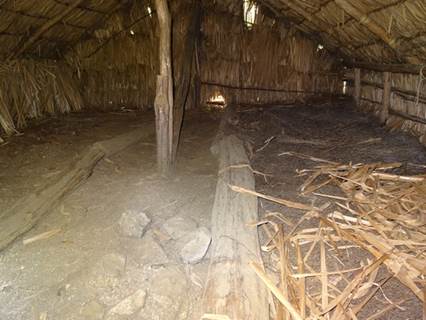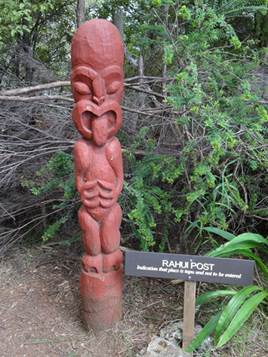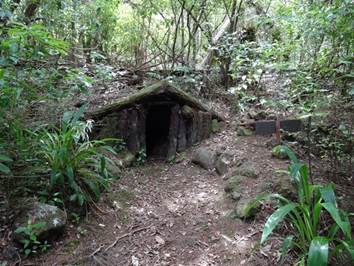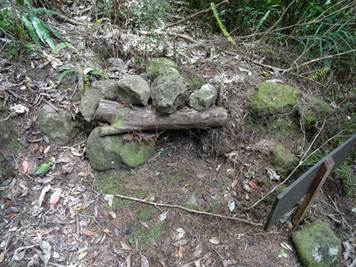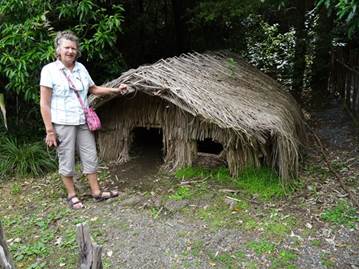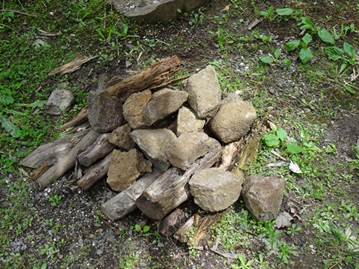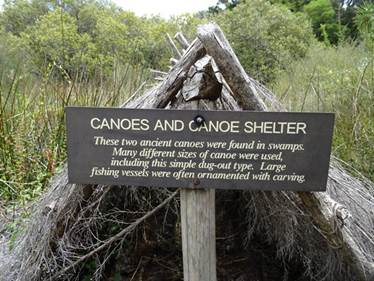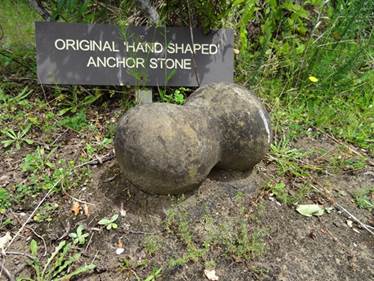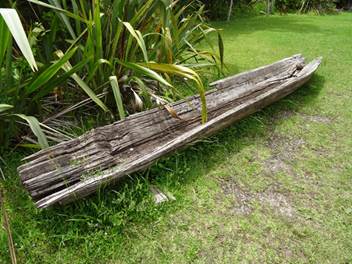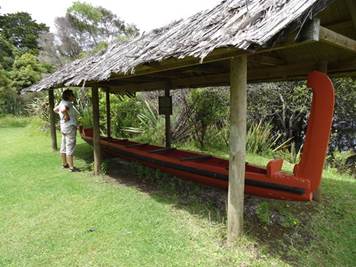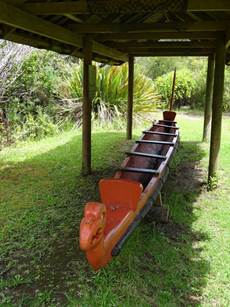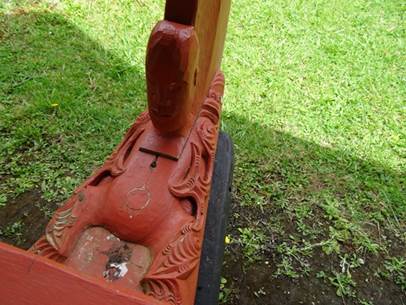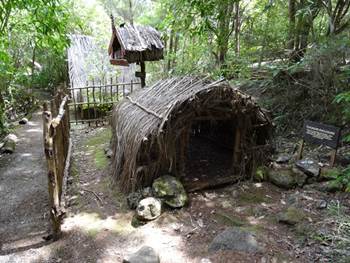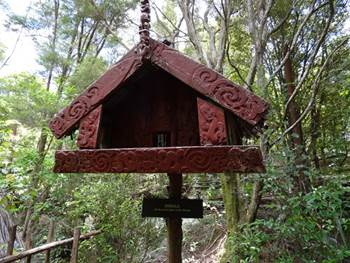Waitangi to Matauri Bay - Kerikeri 2

Opposite Kemps House and the Store was a mock up Maori fishing village, called Rewa’s Village. Interesting but looking a bit tatty and in need of some TLC.
The reception had run out of printed guides – printer on the blink, so we got a discount. No doubt that would have made it a bit more interesting. This is the chiefs family enclosure. The marae, usually clear ground in front of the chiefs house, was where the village met and all activities like receiving visitors, haka, dances etc. took place. Paul outside the chiefs house. The door was tiny, the window is normally to the right of the door. You don’t really think about it but the wooded Maori houses that we have seen were built after the arrival of Europeans, they wouldn’t have been able to saw the wood!
Nice one Paul. There was a fire just inside the door and beds presumably lined either side of the house.
A Rahui post – indicates a place is tapu and not to be entered.
In order to stop rats getting to their food stores (LHS) of things like kumara – a type of potato you get throughout Polynesia, very dry – some food was kept in little sacrificial store houses (RHS) for the rats to eat.
This was another shelter, you can’t believe people crawled in there. I guess most of their time must have been spent outdoors. On the right is a hangi (earth oven). We have not been to one of the cultural shows where you get given food from one of these. Bit like over ground cooking, you set stones on top of the wood. Burn the wood, rake back the embers, place green leaves over the hot rocks then pile on the food: kumara first, then green vegetables then flesh food wrapped in leaves. Add another layer of leaves with a sprinkling of water, then layer of earth and leave to steam away for a couple of hours.
A canoe shelter and anchor stone!
Dead and not so dead canoes.
A fishing canoe (waka tete) with a plain figure head and ancestor watching what is going on.
Priest enclosure – rather him/her than me. I assume a he though, you can just make out the pataka, where sacred objects were stored (right) behind the hut / hovel really.
After all this excitement it was a quick trip up the road to Matauri Bay. |
